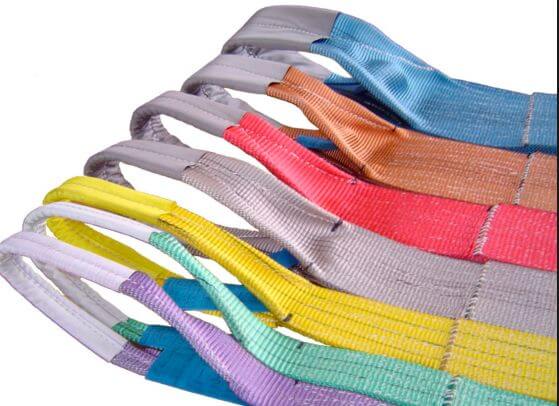Webbing Slings and Lifting Larger Loads
7 September, 2016
Webbing slings are much lighter than traditional wire rope products, yet still offer a reliable, versatile alternative to the market. Despite their lighter nature, they are still able to handle high levels of stress and pressure. Below we examine how to lift larger loads with a web sling.
Why are webbing slings useful for lifting larger loads?
One of the biggest benefits of a webbing sling is that they are provided complete with a wide bearing surface, meaning that they are able to protect and support the load that they are lifting, minimising the damage that another type of lifting product may cause. Alongside this, due to their stretch characteristics, they avoid any sudden shock load problems, which can occur when larger loads are involved. Finally, they are flexible, can mould themselves into different shapes, suffer from minimal twisting or spinning and are not subject to rusting.
 Webbing slings provide a reliable alternative to wire rope for some applications
Webbing slings provide a reliable alternative to wire rope for some applications
Choosing the right sling
Of course, it is not a one-size-fits-all approach with a webbing sling, just as it is the same for wire ropes and end terminations. You must choose the characteristics of your webbing sling and the environment that it will be operating within appropriately to ensure that it is able to handle larger loads; considering factors such as its size and shape.
All webbing slings, including our own product range, use a handy colour coding system so you know what kind of a size load your equipment will be able to handle, with purple signalling a 1-tonne weight, right through to orange which can manage 10-tonnes. View the full colour coded guide on our webbing sling product page here.

The colour coded webbing slings
Keeping your webbing sling safe
If you intend to use your webbing sling to lift larger loads, it is recommended to be extra careful with the storage. Inspect webbing slings regularly, ideally before each use, and be sure only to store it in the
following conditions:
- for polyester and polyamide webbing slings, these can be stored anywhere with temperatures ranging from -40 degrees Celsius to 90 degrees Celsius
- for polypropylene webbing slings, these can be stored anywhere with temperatures ranging from -40 degrees Celsius to 80 degrees Celsius
Further information on webbing slings
Webbing sling are extremely adaptable in nature, and so are able to manage loads of all different sizes and weights with great effectiveness. If you’re interested in hearing more about what our range of webbing slings could do for you, get in contact
with us here.
 Webbing slings provide a reliable alternative to wire rope for some applications
Webbing slings provide a reliable alternative to wire rope for some applications
 The colour coded webbing slings
The colour coded webbing slings